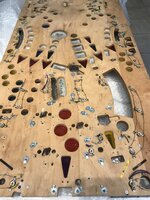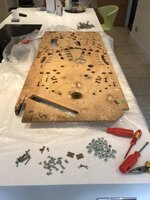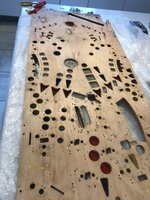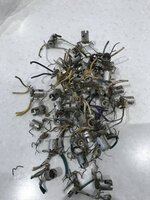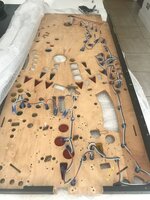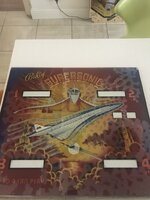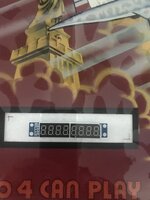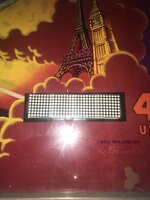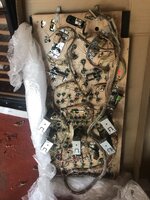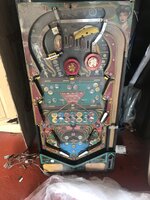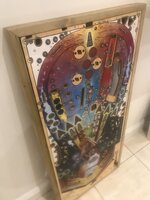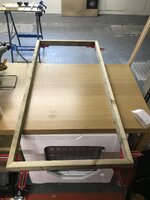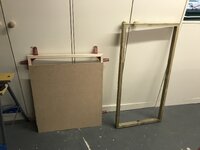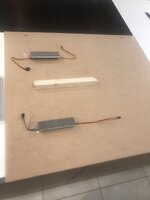Next project is to use an LED string and arduino to light up a spare playfield as a piece of wall art. I have got some old playfields (just arrived) and I dug one out this evening to take a look. The first thing that struck me was that I will need to first get the LED string to reach to all the inserts and the holes through the playfield where a lampholder is/was. There is only about 10cm of wire between each LED light on the strings that I have bought, so I need to cut and extend the wires to bridge large gaps over the playfield. I will try to work a route around that minimises the amount of cuts I need to make! It doesn't matter what order I thread the LED's around as I'm going to have to map and group them anyway. All I WILL need to do is number them as I go along, so I know which LED number is in which Insert or lamp hole.
I then started thinking about how I am going to program these lights and what sort of effects to do.
The first sort of effects are the usual sort of sequencing runs that you get in pins - either during a game or in attract mode. e.g. if there are inserts for 2X, 3X, 4X, 5X, X bnous, they these will typically light up in sequence, or will flash together. Almost all the lights can be grouped together like this. Although sometimes there are odd 'orphan' lights - e.g. a 'special' or 'extra ball'. I could either group those together, or flash them individually, or tag them into a group of other lights that are nearby. The GI lamps can be grouped together - probably best by proximity to each other.
A second type of effect is made by grouping the lights in a different way, based on their physical position on the playfield. e.g. start at the bottom of the playfield and illuminate gradually up. or down, or side to side, or in a circle or arc, etc.
So, it looks like I need to be able to group lights together and also group them multiple times in different ways depending on the effect I am trying to produce. MY programming skills are basic with arduino, but I know I'm going to have to use arrays to store the groups - looks like a late night for me reading up on some programming tricks and tips.

